#Giant Robo OVA
Explore tagged Tumblr posts
Text
Do You Know This Anime?

52 notes
·
View notes
Text

did you know that legend of the blue wolves was created to be (one of the) financial support for giant robo OVA episode 7's production? Now you know
#my fanart#legend of the blue wolves#hot space cowboys#giant robo#giant robo OVA#giant robo the day the earth stood still#cursed
9 notes
·
View notes
Text


I saw somebody make a really cute strawberry mod for Anji, but I unfortunately lost a link to the tweet about it. 😵
(Also bonus doodle of Anji meeting the character that inspired his creation, Professor Go from the Giant Robo OVAs.)
#Guilty Gear#GG#Guilty Gear fanart#ギルティギア#Guilty Gear Accent Core#GGAC#Anji#Anji Mito#御津闇慈#Giant Robo#ジャイアントロボ#Giant Robo OVA#Professor Go#Go Gakujin#My art
22 notes
·
View notes
Text
An Abbreviated History of Mecha Part 4.1: THE EAST IS BURNING RED!!! (1990-1995)

(Read in the voices of Yosuke Akimoto and Tomokazu Seki) ANSWER ME, DOMON! THE SCHOOL OF THE UNDEFEATED OF THE EAST!!
THE WIND OF KINGS!!
ZENSHIN!!
KEIRETSU!!
TEMPA KYOURAN!!!
LOOK, THE EAST IS BURNING RED!!!
Welcome back to An Abbreviated History of Mecha! Last time, we saw the proliferation of mecha shows throughout the 80's. We also saw the introduction of an incomplete list of influential industry people who got their start in the 80's. In the 90's, we will begin to see a continuation of this proliferation of mecha works throughout the decade. The 90's will also see a lot of the stories I have talked about pay off, as
What we will also see in the 90's are a few major events that will affect the world of mecha in pretty major ways. The first is the bursting of the Japanese economic bubble, which would cause the Japanese economy to go from an era of excess to one of stagnation known as the Lost Decade. Another is the sudden arrival of a third honorary mecha series, except this honorary mecha series would arguably help to kickstart the slow decline of mecha stories. It should be noted that this series is not the only reason for the slow decline of mecha shows. That is a whole conversation in and of itself, and one that, maybe one day, I will talk about.
The last thing that should be noted about the 90's is that this would also see the creation of a handful of networks in the US that would help to bring anime over to the west, namely one Cartoon Network (and more importantly, its spinoff networks Toonami and [adult swim]) for the people in the US. While anime had seen some popularity in the west thanks to shows and movies like Robotech, Voltron, Ghost in the Shell, and Akira, it would be the four-part knockout of two of the series mentioned here alongside animanga juggernauts Dragon Ball Z and Sailor Moon that would cause anime to become mainstream.
That should be everything. With all of that out of the way...
Gundam Fight!
READY?! GO!!!
Yuusha Exkaiser/Brave Exkaiser (1991)

Starting us off in 1991, Takara would realize that, due to the sudden success of Transformers in the US, it might be time to diversify as Transformers had no longer felt like it was truly their property anymore. As such, they would create the Yuusha line, with their debut series being Brave Exkaiser. Exkaiser would prove to be a massive hit amongst its intended younger audience and would kickstart a whole franchise, which would also include:
The Brave Fighter of Legend Da-Garn (1992)
The Brave Express Might Gaine (1993)
The Brave Police J-Decker (1994)
The Brave of Gold Goldran (1995)
Brave Command Dagwon (1996)
The King of Braves, GaoGaiGar (1997), which I will talk about next time.
The Brave franchise is important due to how often this series gets referenced by other works, with the usual reference points being either Might Gaine or GaoGaiGar. More importantly, both Brave Exkaiser and the Giant Robo OVA would usher in an era of works that looked to the older mecha shows like Tetsujin 28, Mazinger Z, and Getter Robo for inspiration as opposed to Mobile Suit Gundam.
Super Robot Wars (1991) & Another Century's Episode (2003)

1991 would also see the start of Banpresto's Super Robot Wars, the ultimate crossover of in terms of mecha works. Super Robot Wars is where a lot of mecha-related terminology such as Super Robots, Real Robots, and the Holy Trinity (Mazinger Z, Getter Robo, Gundam 0079) come from. Super Robot Wars would also introduce its own set of original robot designs, each with their own unique pilots. Super Robot Wars would eventually gain a sister series in the form of 2003's Another Century's Episode.
One of the most important factors of Super Robot Wars is that, due to its celebratory (some might even say masturbatory) nature, these games can serve as a good metric behind what is a mecha story.
Giant Robo the Animation: The Day the Earth Stood Still (1992)

In 1992, Yasuhiro Imagawa and company would release the first episode of the now-legendary OVA Giant Robo the Animation: The Day the Earth Stood Still. This OVA, along with Brave Exkaiser, would begin the push for giant robot shows to take inspiration from works that were not Mobile Suit Gundam. The Giant Robo OVA, on top of being one of Imagawa's magnum opera (fun fact: the plural of magnum opus is magnum opera) alongside Mobile Fighter G Gundam, would also be the direct inspiration for western darling The Big O.
Kyoryu Sentai Zyuranger (1992) & Mighty Morphin' Power Rangers (1993)

If you're wondering why I mentioned Super Sentai in part 2, this series is why.
In 1992, the Super Sentai series Kyoryu Sentai Zyuranger would release in Japan. While, to my understanding, it was about as popular as the rest of the Super Sentai franchise, this specific series in particular would attract the attention of one Haim Saban. With some editing here and there, along with filming new segments featuring an American cast as opposed to using the original footage featuring the original Japanese cast, Saban and company would create Mighty Morphin' Power Rangers, which would air for the first time in 1993. Mighty Morphin' Power Rangers would go down in history as one of many series that would help pave the way for animanga to gain a foothold in western media.
Denkou Choujin Gridman/Gridman the Hyper Agent (1993) & Superhuman Samurai Syber Squad (1994)

1993 would also see the legendary Tsuburaya Productions, after a long period of struggles, finally make a comeback with their new series Gridman the Hyper Agent. With its smaller budget, the Hero of Dreams would come to be known as the hero who would help Tsuburaya Productions come back to relevance in the 90's.
Due to the success of Mighty Morphin' Power Rangers, other US companies would want in on the action. DiC Entertainment would buy the US distribution rights for Gridman and would try to put their own spin on Power Rangers by creating Superhuman Samurai Syber Squad.
Eventually, the people at Studio Trigger, who were interested in making an anime based off of Ultraman, would reach out to Tsuburaya Productions in an attempt to get permission to do so. While their initial request for Ultraman specifically was shot down, they were allowed to choose any of Tsuburaya's other properties for their anime adaptation. And they would choose Gridman for their subject, which would lead to the creation of SSSS.Gridman (a show I will talk about later).
If you have time to spare, you should also check out Cheese GX's video on the history behind Gridman.
Patlabor 2 (1993)

The fan-beloved Patlabor 2 would also release in 1993. Reflecting the realities of post-economic bubble Japan and the ensuing Lost Decade, Patlabor 2 would trade out the optimism commonly associated with the franchise with a much more cynical and grounded (even by Patlabor standards) tone. People tend to view this movie as being what Patlabor is all about, but in my opinion, this movie is an anomaly that can only truly be appreciated by knowing the context of everything that came before it.
Magic Knight Rayearth (1993)

1993 would also see the publishing of the shoujo manga series Magic Knight Rayearth. Created by the legendary mangaka group CLAMP, Rayearth would be one of the first magical girl series to really escape the long shadow cast by one Sailor Moon (if I understand my magical girl history correctly, Sailor Moon is basically the magical girl equivalent of the original Mobile Suit Gundam). How was Magic Knight Rayearth able to do this?
By adding giant robots into the mix. That's right: Magic Knight Rayearth is most likely the reason why there is overlap between magical girl and mecha fans. While remembered by many as being an important series in the canons of mecha, magical girls, and CLAMP, Rayearth's legacy would largely be overshadowed by one Cardcaptor Sakura.
Mobile Fighter G Gundam (1994)
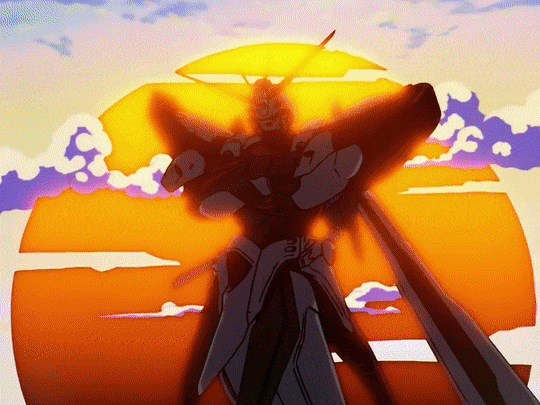
1994 would see Gundam return in a radically different form with the martial arts-inspired Mobile Fighter G Gundam. Often considered to be the other iconic series of Yasuhiro Imagawa, G Gundam would mark the beginning of a new era of Gundam by being the first alternate universe series to exist, thus allowing the franchise to flourish while letting the original Universal Century timeline continue to exist and get its own stories. Because of its radically different nature though, G Gundam is oftentimes looked down upon as a series that spits on the legacy of the Gundam franchise.
And again, not to toot my own horn here, but I also have a trilogy of posts all talking about G Gundam. All three posts seemed to be pretty popular relative to my other posts, so there seemed to be something in them that resonated with a lot of readers.
New Mobile Report Gundam Wing (1995) & New Mobile Report Gundam Wing: Endless Waltz (1996)

Following on from G Gundam is 1995's New Mobile Report Gundam Wing, which is arguably the most important Gundam series after the original and Gundam Seed in the 2000's. As a return to the war stories of the original Gundam, the reason why this series is important is because Gundam Wing would be one of the big four anime series that would make anime become mainstream in the West.
In my opinion though, Gundam Wing's legacy begins and ends with it being the first Gundam series to air in the West. In Japan, another series would air at around the same time as Gundam Wing, one that would loom over the rest of canon of mecha due to its impact on the anime industry and Japanese pop culture as a whole.
Neon Genesis Evangelion (1995) & The End of Evangelion (1996)

Ah yes, the original "Not Like the Other Girls" mecha anime.
The series that would hamper a lot of Gundam Wing's cultural impact would be Hideaki Anno and Studio Gainax's legendary Neon Genesis Evangelion, and the second of Gainax's Big Four alongside Gunbuster. Created as an homage to shows like Ultraman and Space Runaway Ideon, Evangelion would take the zeitgeist by storm, forcing its way into the pantheon of the mecha canon like... well, like an Evangelion Unit tearing through an Angel's AT Field. There was a certain je ne sais quois to the series that made it stick to a lot of viewers at the time, and a lot of the history and context behind this series' production would help shape a lot of its more cerebral moments.
Anno would eventually revisit this series in 2007 by remaking this anime series into a quartet of films known as the Rebuild of Evangelion series. At first just a project to bring Evangelion to the 21st century, the Rebuild films would eventually become the first of the Shin Japan Heroes Thematic Universe, which would come to also include:
Shin Godzilla (2016)
Shin Ultraman (2022)
Shin Kamen Rider (2023)
The problem with a series like Evangelion is that, while it is a culturally important series that deserves a lot of the attention and praise it gets, a lot of Evangelion fans tend to go a little bit too far. It's subversive nature tends to become exaggerated to the point where Evangelion is often treated as being subversive of mecha, and thus, not like the other mecha shows. This is, in large part, why the infamous idea of Evangelion being "Not like other mecha shows because it deals with character drama" comes from, and it's something that I'd like to talk about at some point in the future after all of this.
Conclusion
And there you have it! As we get into the latter half of the 90's, we will see a lot of iconic mecha shows begin to pop up. We will also see [adult swim] begin to really play its part in making anime more mainstream, along with Gundam begin to decline and the end of the Brave franchise. We'll also see the appearance of the crazy man known as Tetsuya Takahashi make his directorial debut in what is quiet possibly the single most ambitious JRPG project of all time along with a surprise appearance by... LEGO?!
Next time, Part 4.2: A Grand Glorious Gathering!!
This will be the key to victory.
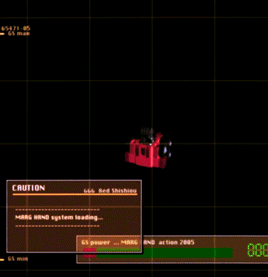
#anime and manga#mecha#mobile fighter g gundam#brave exkaiser#magic knight rayearth#giant robo ova#giant robo the day the earth stood still#patlabor#patlabor 2#power rangers#super robot wars#super robot taisen#new mobile report gundam wing#gridman the hyper agent#neon genesis evangelion#an abbreviated history of mecha#superhuman samurai syber squad#denkou choujin gridman#kyoryu sentai zyuranger
48 notes
·
View notes
Text
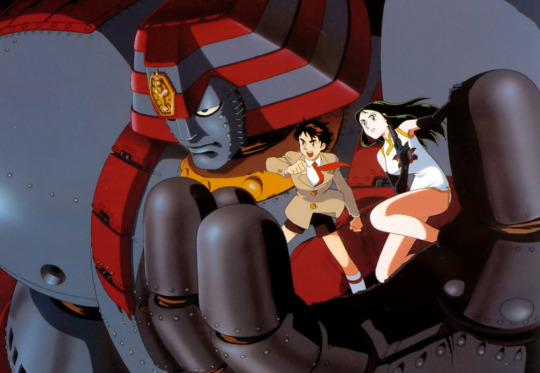





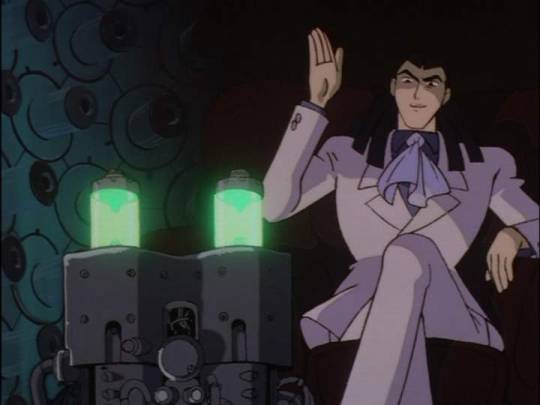

small collection of evidence why Sonic Adventure 2 fans need to go watch Giant Robo right goddamn now
10 notes
·
View notes
Text

Banpresto Misteru Yokoyama character catalog items (1998)
#Banpresto#Mitsuteru Yokoyama#Tetsujin#Tetsujin 28 gou#Tetsujin 28#Sally the witch#Giant Robo#Giant Robo OVA#Babel II#Babel Nisei#Figure#Plush#Keychain#Toys#Vintage manga#Vintage anime#Mod's post
51 notes
·
View notes
Text

daisaku kusama 草間大作
ginrei 銀鈴
from giant robo the animation
40 notes
·
View notes
Text





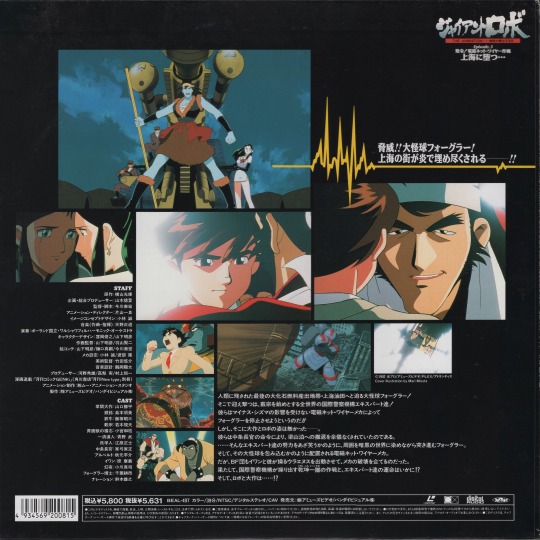
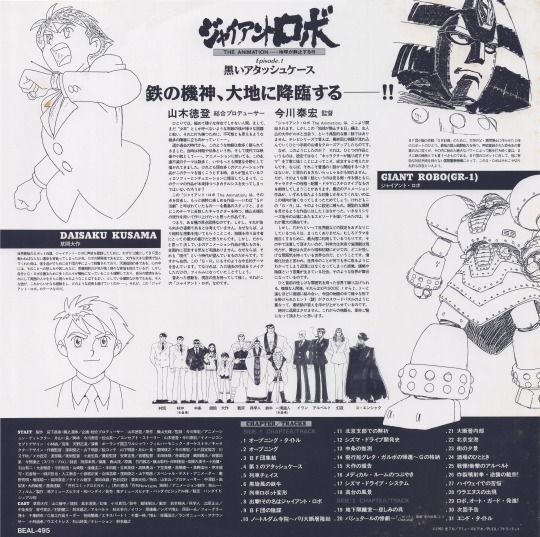
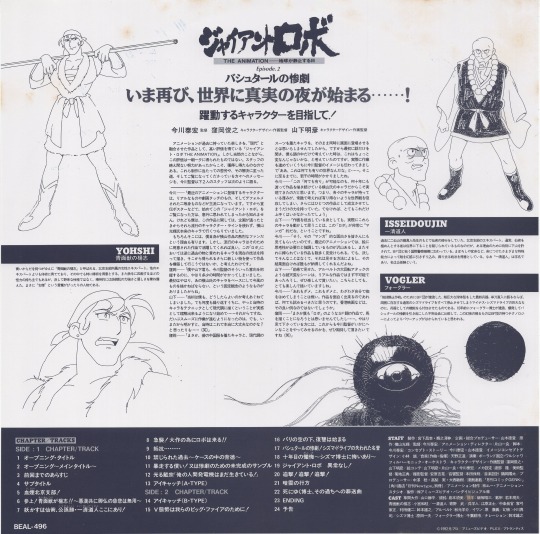

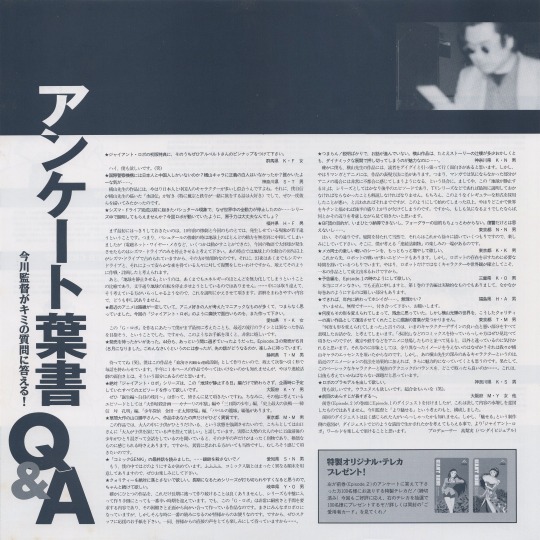

GIANT ROBO: THE DAY THE EARTH STOOD STILL
23 notes
·
View notes
Text
I simply think you all need to see the most gay betrayal arc incident from giant robo. these two characters are like barely plot relevant at all btw they only show up in the last 2 episodes of the OVA to serve cunt and kill eachother
#giant robo#giant robo ova#giant robo the day the earth stood still#giant robo red mask#giant robo fitzgerald#communication#cw knives#cw stabbing#What Did Imagawa Mean By This
29 notes
·
View notes
Text
Another giant robo related meme because I have brain rot even though I’m not rushing back to watch the last ep-if only because I have to finish new with my irls tomorrow and don’t wanna be burnt out bc this happened before-but I really wonder and fear for how many more “wtf is even happening” mechas there are and if each gets progressively more confusing.

#meg text#shitpost#getter robo armageddon#the big o#giant robo ova#the fact this pipeline goes from “imagawa involvement” to “random non Gundam or brave sunrise show” to “imagawa again” saids all#like this is connected in itself because someone told me the same staff as GR worked on Big O#and even if imagawa didn’t direct that they clearly carried over his batshit ideas#it’s really so fucking weird how Armageddon is the LEAST incomprehensive one here when it feels like a season 2 of a show but isn’t#it still has plot holes and insane shit and a big diversion from getter canon yet it tries to actually even itself out#meanwhile giant robo apparently had the issue of “this was the 6 part in a 7 part series that never got fully made” 😭#not even shitting on imagawa there bc more people were likely at fault but HOW DOES THIS HAPPEN#(oh and big os production was smooth but cn asking for more action maybe caused the script to change a bit)#man if I ever get curious and watch Eva it’s probably gonna be so fucking normal compared to any of these
9 notes
·
View notes
Text
Ginrei from Giant Robo: The Animation shares a voice actress with Mia from the .hack series.
Voiced by Debra Jean Rogers

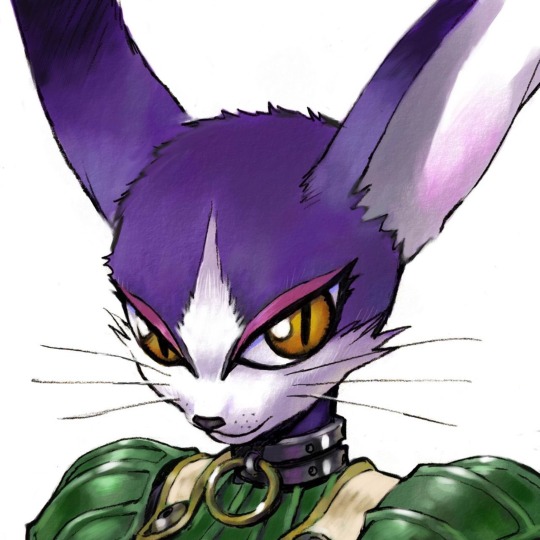
#same voice actor#voice acting#giant robo ova#giant robo the animation#.hack#.hack//imoq#discotek media#bandai namco#cyberconnect2#🇺🇸
6 notes
·
View notes
Text

This was an interesting one.
In terms of scale, this plays out something like a cross between an old-school sci fi anime (which is what it actually is) and a Greek Tragedy. Everything is huge, stylish, and feels inevitable. It doesn't really fall into a single genre, something representative is that the enormous final battle, otherwise a contest between two enormous mechanical beings, is interrupted with a fight straight out of a samurai series and it doesn't feel strange or out of place at all.
Interesting ruminations on what a sacrifice truly means and is in here, too. I'm going to be thinking about this one for a while and I would not be surprised if I rewatched it at some point and eventually scored it a bit higher. Good show.
Also: Cool Robot
2 notes
·
View notes
Text

Giant Robo looms in this false-perspective shot.
2 notes
·
View notes
Text


✨The Fabulous Fitzgerald✨
#Giant Robo#ジャイアントロボ#Giant Robo OVA#ジャイアントロボ OVA#Giant Robo The Animation#ジャイアントロボ THE ANIMATION#Giant Robo The day the earth stood still#Fitzgerald#Fabulous Fitzgerald#Mitsuteru Yokoyama#My art
7 notes
·
View notes
Text
Some (More, but Actual) Context For G Gundam
Content Warning: Casual mentions of genocide due to the fact that this is a post covering real world events that happened before and during the airing of Mobile Fighter G Gundam in Japan. Reader discretion is advised.
Also, shout outs to Secret Galaxy, whose video on G Gundam helped a bit with some of the juicy context.

So I know I said I'd be talking about G Gundam. I will, but I still need to set the scenery a bit before I actually talk about G Gundam proper. Give you some context, because it'll help when it comes time to understand what was going on with G Gundam. Think of me as Stalker, setting up the scene at the beginning of every episode of G Gundam.
So with that, Context Fight! Ready, GO!!!
Sunrise, Bandai, and Victory Gundam

(Fun fact for the Gintama heads out there: Victory Gundam protagonist Usso Ewin is voiced by Daisuke Sakaguchi. In other words, Usso shares a voice actor with a sentient pair of glasses Shinpachi)
I figure a good place to start with all of this CONTEXT is start with what is going on at Sunrise, the anime company that produces and makes the Gundam anime series. Let's just say I didn't pick this gif of Usso out of the blue. During the run of the previous Gundam series, Mobile Suit Victory Gundam, Sunrise would be bought out by toymaker Bandai. And as they are the new bosses in town, Bandai started making demands. A lot of demands. So much so that series creator Yoshiyuki Tomino left the series once Victory Gundam wrapped up its run due to the amount of meddling Bandai was causing. So now, Bandai is in control of a franchise but lacking one of the main creative forces behind this iconic franchise. They also have a new idea for a new Gundam series, and they would prefer someone who is more compliant with their changes. Fortunately for Bandai, they would tap someone who had worked with Tomino on multiple projects together.
Enter Yasuhiro Imagawa

Bandai taps Yasuhiro Imagawa to direct this new Gundam series, as a move to get someone who may be more compliant to their whims. After all, Imagawa's only major projects as a director at this point are Ajikko-san and a couple of episodes of the Giant Robo OVA (a series I plan on watching eventually). There's just one problem: Imagawa worked under Tomino on a handful of projects, namely Mobile Suit Zeta Gundam. So Imagawa kinda knows what Gundam's all about, especially since his focus was on storyboarding. If anything, he was just as put off on the idea as most Gundam fans at the time were, going so far as to try and come up with some ridiculous mecha designs that would flummox the people at Bandai. Imagawa would fail, but he would learn that it might be best to work with Bandai in order to make this Gundam series. Imagawa would begin work on a series that would, on the outside, be a radical departure from what Gundam was.
(Read in Susumu Chiba's voice) Stand up, Boy! Stand up and FIGHT!!!!
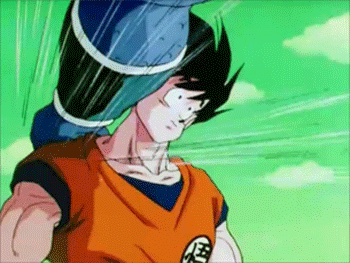
So you've probably gotten to this point and asked: "Why a tournament arc though?" And I will preface my answer with this: I'm not super-certain if the timeline lines up as well in my head, so if anyone can correct me on this, feel free to comment or message me on this if I'm wrong.
My answer is that there are two series responsible for this: Dragon Ball and Street Fighter. See, Dragon Ball Z would also be airing around this time, and if I'm thinking correctly, it should be airing around the time of the Cell Games arc (I think; Again, please correct me if I'm wrong). And remember, Dragon Ball is one of, if not the, most influential shounen battle series of all time. Add onto that the sudden success of Capcom's Street Fighter with the release of Street Fighter II and its colorful cast of characters from various nations with colorful attacks, and you can definitely see why Bandai would want to get in on the trend.

Would it surprise you if I told you that one of the more influential series for G Gundam was also Saint Seiya (or Knights of the Zodiac for those more familiar with its western name), specifically when it comes to the concept of the golden super mode. I also would not be surprised if Saint Seiya was also the reason for the majority of the Shuffle Alliance members being HOT MEN. Then again, Gundam's success was kickstarted thanks to women, so it may also be a treat for the ladies.
What's Going On in the World (1994 Edition)

So enough about Shonen Jump series and Street Fighter. What about the rest of the world? As we all know, media is informed by the world events that unfold as it's being made, and G Gundam is no exception. And while not all of these events happen before the series starts to air, they do, in my opinion, help to either inform or reinforce the ideas and themes present in Mobile Fighter G Gundam. I won't say what those themes and ideas are in this video, but here's an incomplete list of what is going on in the world before and during G Gundam's run:
The Japanese economic bubble bursts in 1992.
To reflect that, Patlabor 2 releases in theaters in 1993, best exemplifying the more pessimistic tones of post-bubble Japan by giving us a much colder and more cynical version of Patlabor that contrasts heavily to the more optimistic tone the series had prior to Patlabor 2.
Furthermore, a lot of western countries would be suffering from recessions at this point in the 90's. To put things into context for Americans, the economy is a large part of why Bill Clinton beat George H. W. Bush in the '92 Election.
In terms of entertainment, two extremely iconic series are still being worked on during G Gundam's airing: Pokemon and Neon Genesis Evangelion.
The general public is more aware of the climate than ever before, especially since it had been about 9-10 years since scientists discovered a hole in the ozone layer directly above Antarctica.
A week after G Gundam begins airing, the Rwandan Genocide begins in earnest.
Before their infamous Tokyo Subway Sarin attack, the cult Aum Shinrikyo would pull off a smaller scale Sarin attack in Matsumoto.
Just for fun: Magic Knight Rayearth airs in October of '94. In my mind, Rayearth acts as a sort of distaff counterpart to G Gundam due to their primary audiences.
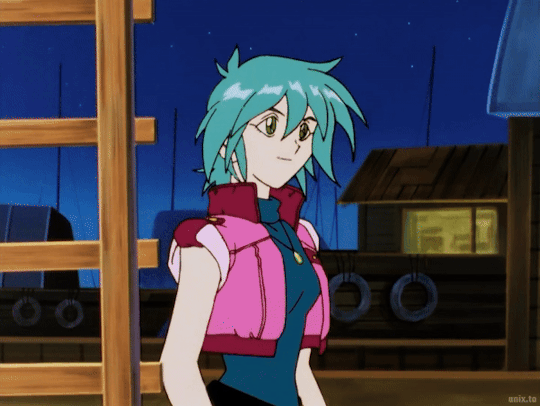
And that's a wrap. I hope this more scattershot dive into some Context TM was interesting. This is going to be on the exam, as next time I will finally be talking about Mobile Fighter G Gundam
#anime and manga#mecha#mobile fighter g gundam#anime history#mobile suit victory gundam#a wild daisuke sakaguchi appeared#saint seiya#knights of the zodiac#street fighter#street fighter ii#dragon ball#dragon ball z#dbz#japanese economic bubble#giant robo ova#ajikko-san#yasuhiro imagawa#mobile suit zeta gundam
17 notes
·
View notes
Text



More photos.

Finished painting Giant Robo. He is, as the name implies, giant. Roughly the size of a Master Grade model kit but very oddly proportioned since he's mostly huge cylinders. Maybe the most empty air inside a kit I own cause those huge shoulders are hollow. Im very happy with the final look. Hes beaten up, grimy, and well worn. Giant Robo has an "old but loyal dog" energy in the OVA and I wanted this to sell the haggardness of the machine visually.
The one detail I wanted to do was some streaking under the eyes to imply the marks of the "tears" GR sheds at the end of the OVA but after messing around with it I couldn't produce an effect I was happy with so I left the face more plain. My hand still hurts from polishing all the bolts on his skirt with a graphite pencil.
Not an overly poseable model, the joints are awkward and there aren't many points of articulation to start with. Hes also just very unwieldy. This is not the best kit I've built from Moderoid but Giant Robo doesn't need to be particularly dynamic, much like the simple name he is defined in the OVA by his sheer scale and enormity. He looms, he crushes, stomps. Hes slow. And the kit does sell that impression.
#giant robo ova#giant robo the day the earth stood still#giant robo the animation#model kit#plamo#gunpla
2 notes
·
View notes